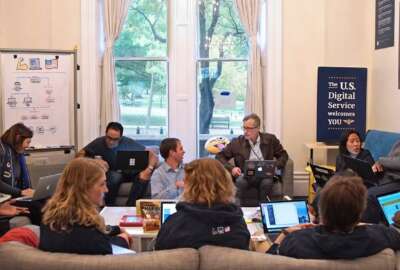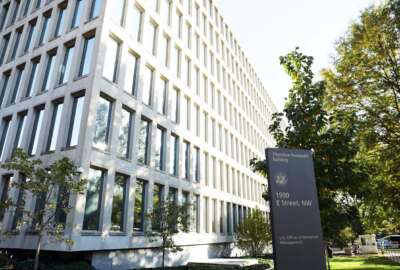
CDC launches future of work task force amid threat of aging workforce
A long-feared retirement tsunami in the federal workforce might not happen anytime soon, but the Centers for Disease Control and Prevention still considers an o...
A long-feared retirement tsunami in the federal workforce might not happen anytime soon, but the Centers for Disease Control and Prevention still considers an older workforce a risk it needs to manage.
With employees working an average of four-to-five years past their retirement eligibility, the CDC has launched a Future of Work task force charged with making sure the agency has the people and skills it needs to meet its mission through 2030.
“We have a workforce that is aging and that may be preparing to retire at any moment now, and we need to effectively manage that knowledge transfer,” Dia Taylor, CDC’s chief human capital officer and deputy ethics counselor, said Thursday at a GovExec conference on the workforce of the future. “We also recognize that we have to evolve as an agency in order to be fit for mission.”
But in keeping up with changing trends in the federal workforce, the CDC and other agencies continue to deal with familiar roadblocks, such as reskilling current employees, recruiting the next generation of talent and identifying new agency management.
To train prospective managers, the CDC has a leadership management and development school focused on supporting new supervisors within their first year on the job. Within that first year, new supervisors are expected to complete a series of courses to give them core leadership skills.
“What we need to make sure is that they understand all the rules of the road so that they can’t claim ignorance — that they’re empowered and knowledgeable of what those skills are and that they have sources and connections with other managers who may be struggling through the same things they’re learning,” Taylor
For mid-level employees who have subject matter expertise, but aren’t a natural fit to manage other employees, Taylor said the agency is looking at ways to identify non-management career paths.
“Most of the time, they have really strong technical skills, but those technical skills have not transitioned them into being an effective leader of people with similar technical skills,” she said. “We’ll work to try to identify opportunities for them that are technical in nature or in-line with their background and capabilities, to make sure that they are able to continue to contribute positively to the mission of the agency. And when all else fails, we will help to release you to your destiny. If that destiny is outside of our agency, then that’s fine, but the one thing we recognize is that we have to help them become better.”
Army takes ‘multi-pronged’ approach to recruit in-demand talent
Hugh Hardin, the deputy garrison commander of the Army’s Fort Gordon, said the rate of workplace changes — sped up by changing business practices and technologies — is moving faster than the pace of how the Army prepares its civilian workforce.
As a result, Hardin said the Army is taking a “multi-pronged” approach that rethinks recruiting, identifies in-demand skills for new hires and ensures that its workforce remains resilient in the face of new trends.
In adapting recruiting practices to go after the next generation of employees, Hardin said the Army needs to understand that prospective hires, some who are right out of college, may not have a great understanding of their career trajectory right away.
“If you ask an employee or candidate a question such as, ‘Where do you see yourself in five years?’ those of us that have been in the federal workforce for quite some time expect a certain answer from a candidate. But these younger candidates may not have a good answer right now. They may tell you ‘Quite honestly, I don’t know.’ And we have to be comfortable with the candidate who gives us that answer,” Hardin said.
Over the past few years, agencies have come around to the idea that millennials and subsequent generations may not stay in the federal workforce for their entire career.
In recognition of that fact, Hardin said agencies need a plan to retain the skills and perspectives of newer employees, with the expectation that they could leave sooner rather than later.
“When you find these individuals that possess the skill sets that you’re looking for, quite frankly, you need to be able to capture what they brought to your workforce. Because the odds are this younger generation may or may not be in your workforce very long — that’s been our experience,” he said. “So when they come to your workforce, they bring a certain business practice, they bring a certain mindset or technological capability, capture that so that you can pass it on to your legacy employees or the next generation that comes along.”
These workforce challenges come into focus, Hardin said, as the Army assesses the talent it will need to build “installations of the future” with predictive maintenance capabilities and greater resilience to threats ranging from natural disasters to cyber-attacks and disruptions to the electrical grid.
Hardin said it remains unclear what skill-sets the Army would need to make this project a reality, but in an effort to make the workforce more agile, he said the service has generally moved away from employees being specialists on particular widgets and has instead focused them on becoming “generalists.”
“There is no centralized methodology to build a generalist. We empower each of our installations or garrisons to do that. And for us, it’s a little bit of self-learning and it’s understanding what resources are out there. Are there turnkey but customizable solutions that get you where you think you need and to leverage those, or are there existing solutions that you need to leverage. So, again, it’s a challenge, but we’re doing that right now at a local level,” he said.
Creating a more agile and resilient workforce, Hardin added, requires management to have strong interpersonal skills, emotional intelligence and mindfulness.
“[It’s] the ability to take an employee out of the widget department, put them in the gadget department, and they’ll be very comfortable operating there,” he said. “They may have a small learning curve but at the end of the day, they will perform.”
Copyright © 2024 Federal News Network. All rights reserved. This website is not intended for users located within the European Economic Area.
Jory Heckman is a reporter at Federal News Network covering U.S. Postal Service, IRS, big data and technology issues.
Follow @jheckmanWFED




